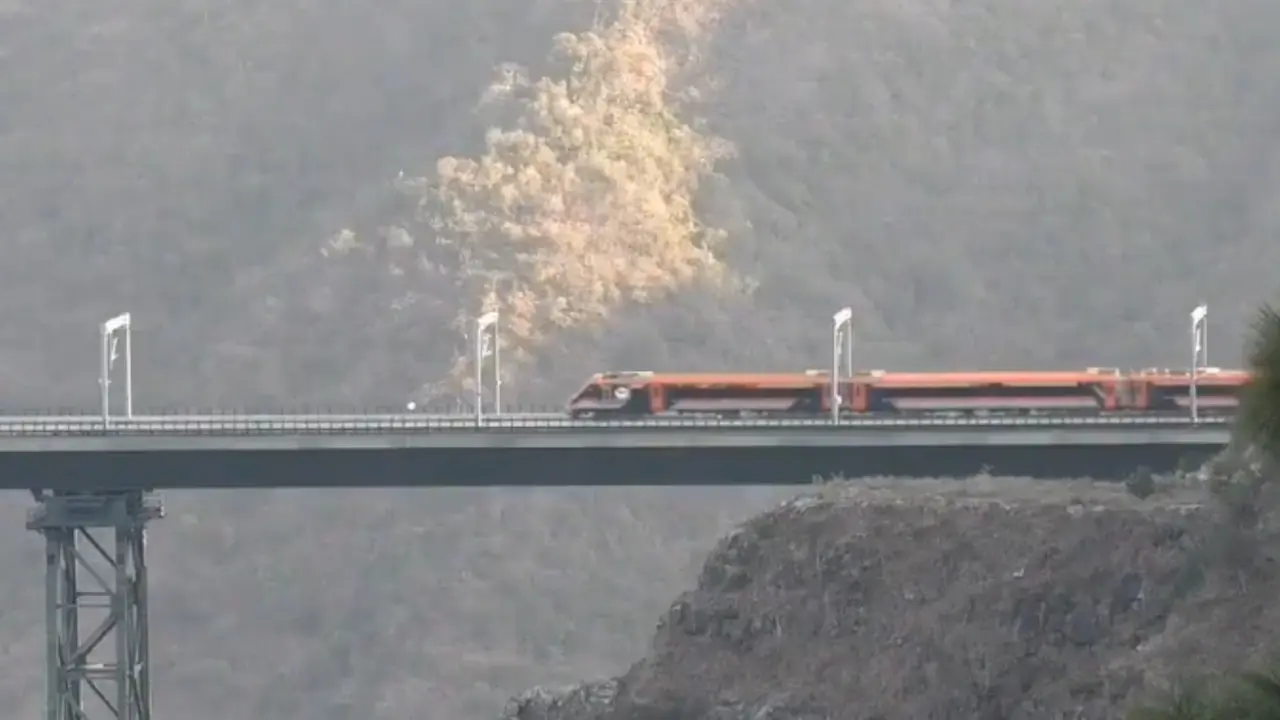Updated 10 June 2025 at 16:47 IST
Beyond Steel and Stone, Chenab Bridge Binds the Nation’s Fabric
Located just 63 kilometres from the Line of Control, the Chenab Bridge is more than an engineering marvel, it is a vital strategic asset.
- India News
- 4 min read

New Delhi: On June 6, Jammu and Kashmir witnessed a landmark moment as Prime Minister Narendra Modi inaugurated the long-anticipated train service, fulfilling a century-old aspiration to integrate Kashmir into India’s rail network. This feat exemplifies India’s engineering prowess and markedly enhances connectivity to the Valley. It stands as a testament to how the fusion of applied science and visionary leadership can surmount formidable challenges, inspiring future generations to aspire boldly and dedicate themselves to nation-building.
The occasion also marked the debut of two Kashmir-specific Vande Bharat trains and the unveiling of two engineering masterpieces: the Chenab Bridge, the world’s tallest railway bridge soaring beyond the height of the Eiffel Tower, and the Anji Bridge, India’s inaugural cable-stayed rail bridge.
Collectively, these ventures epitomize India’s unwavering commitment to infrastructure innovation and the advancement of national integration.
Chenab Bridge not a dream, it is a realisation etched in metal and stone
In the 1890s, Maharaja Pratap Singh envisioned connecting Kashmir to India by rail, proposing three routes. Only the Jammu–Sialkot line, which opened in 1890, was completed but was lost after Partition.
Advertisement
Other plans, including the Jammu–Srinagar line, stalled due to wars, colonial neglect, and financial hurdles.
The dream was revived in 1983 when Indira Gandhi laid the foundation for the Jammu-Udhampur-Srinagar line; however, progress remained sluggish due to bureaucratic delays, difficult terrain, and security challenges. It was only under the Modi government that the project gained real momentum. Accelerated and completed with engineering marvels like the Chenab and Anji bridges, Kashmir is now finally connected to India’s railway network, closing a 141-year-old chapter of perseverance and determination.
Advertisement
Bridge more than a feat of engineering, it is a bold statement of strength and vision
Located just 63 kilometres from the Line of Control, the Chenab Bridge is more than an engineering marvel; it is a vital strategic asset. Built with DRDO-approved blast-resistant and earthquake-proof features, it is designed to withstand terrorist attacks without collapsing, ensuring reliable all-weather rail connectivity. This crucial link strengthens defence logistics and enables rapid military movement in this sensitive border region.
The bridge’s inauguration marks a new chapter, ending decades of isolation by providing dependable, year-round connectivity. Beyond improving transportation and boosting the economy, it significantly enhances regional integration, making the area more accessible, secure, and connected.
Tourism in the valley is poised for a new era
The inauguration of the Chenab Rail Bridge comes at a pivotal moment for Jammu & Kashmir’s tourism sector, which faced a severe blow after the April 22 Pahalgam terror attack that claimed 26 lives. Tourism contributes 7 to 8 percent to the region’s GSDP and remains one of the primary sources of employment and economic activity in the services sector.
With the launch of the state-of-the-art Vande Bharat trains, the journey between Jammu and Srinagar now takes just over three hours, nearly halving the usual road travel time.
A chair car ticket costs less than ₹715, making travel significantly more affordable for domestic tourists. This enhanced rail connectivity is expected to breathe new life into tourism, offering safer, quicker, and more cost-effective access to the Valley.
The economy of Kashmir will receive a major boost overall
The Chenab Bridge is set to be a game-changer for Kashmir’s horticulture and handicraft economy. By drastically cutting travel time and transport costs, it enables faster, safer movement of apples, saffron, and handcrafted goods to national and international markets. This is crucial for an industry that supports 3.5 million people and produces over 2 million tonnes of apples annually over 75 percent of India’s output.
Horticulture alone contributes nearly 7 percent to Jammu and Kashmir’s GSDP. With exports of handicrafts already reaching Rs 2,567 crore in two years and expected to hit Rs 3,000 crore by March 2025, the enhanced rail connectivity via the Chenab Bridge will only accelerate this upward trend, reducing spoilage and boosting farmer and artisan incomes.
To conclude, the Chenab Bridge is more than metal and concrete; it is a statement. A statement that no terrain, no challenge, no obstacle can stop India’s resolve. It is a lifeline that connects hearts, fuels growth, and secures the future. Built with DRDO-approved blast-resistant and earthquake-proof technology, it ensures year-round connectivity in a sensitive border region showcasing India’s strength: unshakable, unstoppable, and marching ahead on rails of steel.
Get Current Updates on India News, Entertainment News, Cricket News along with Latest News and Web Stories from India and around the world.
Published By : Shashwat Bhandari
Published On: 10 June 2025 at 16:45 IST
